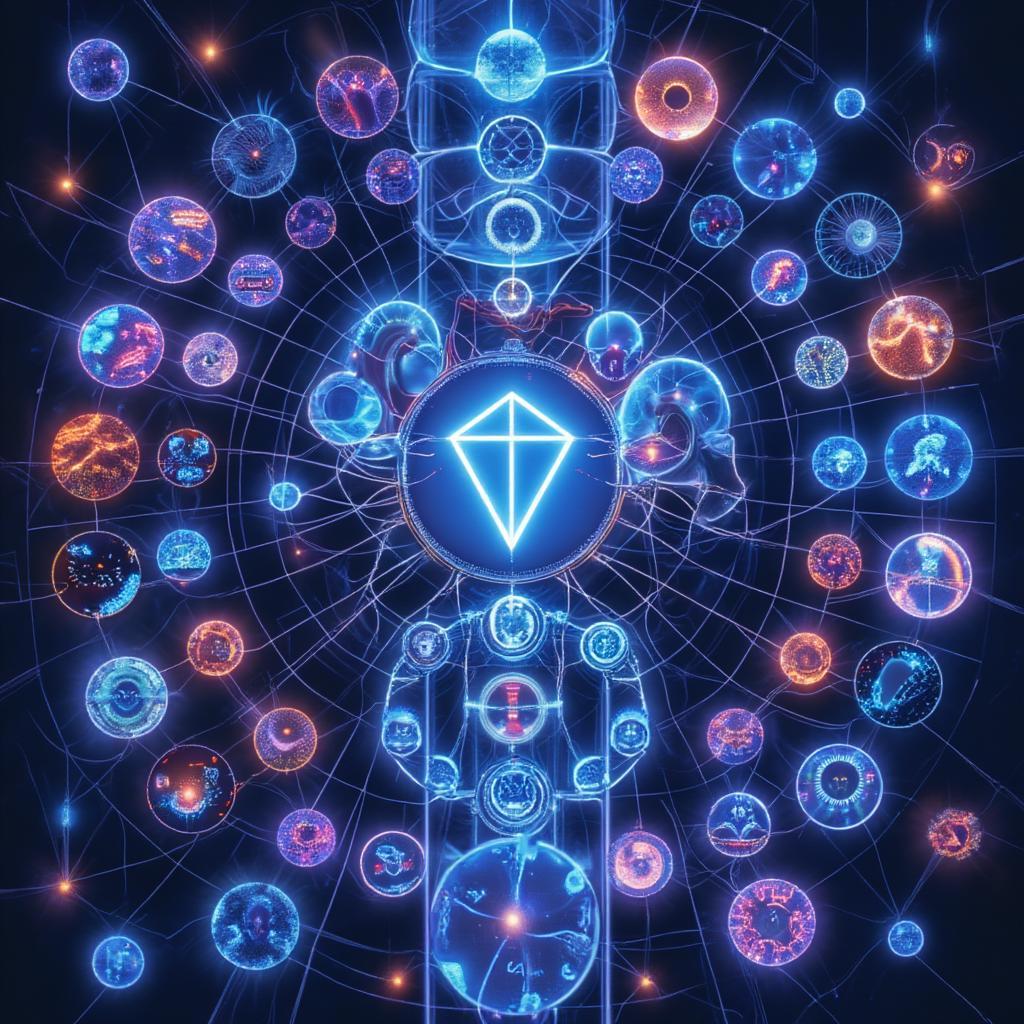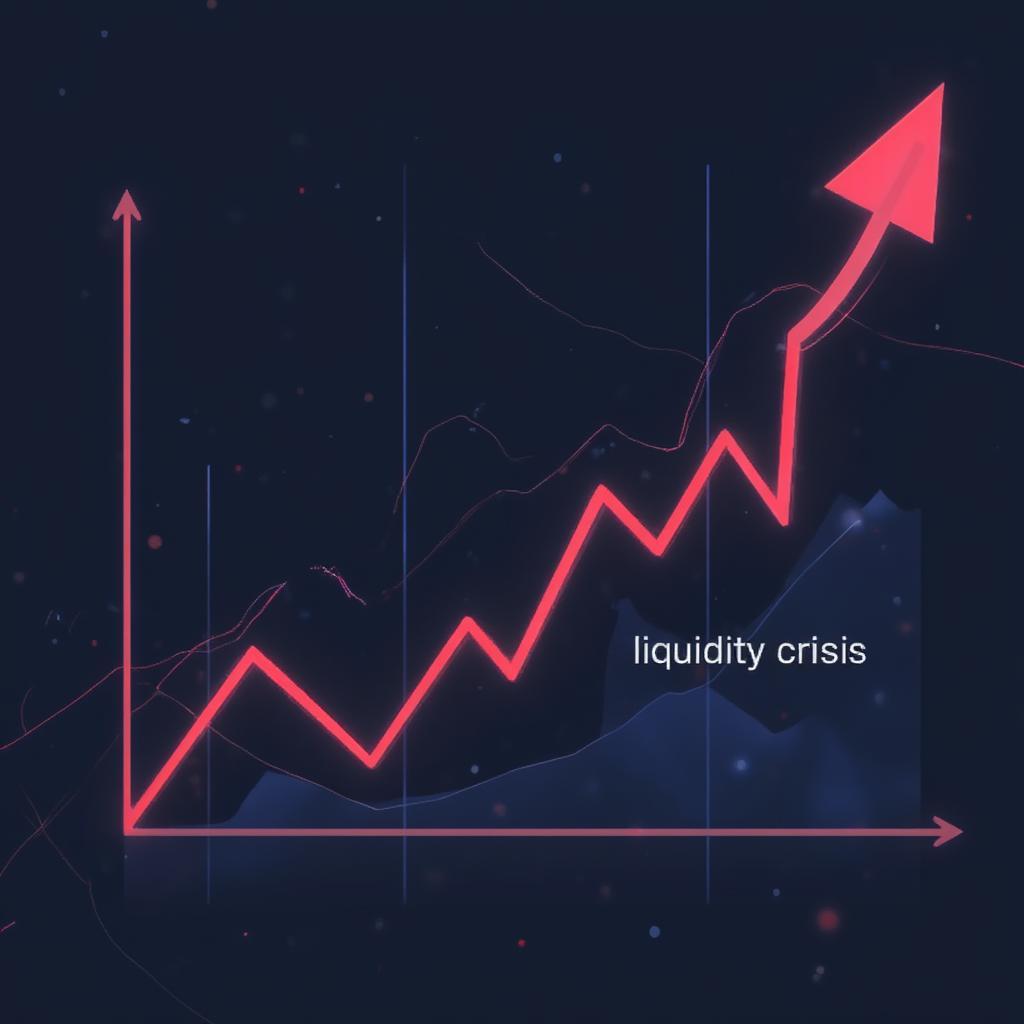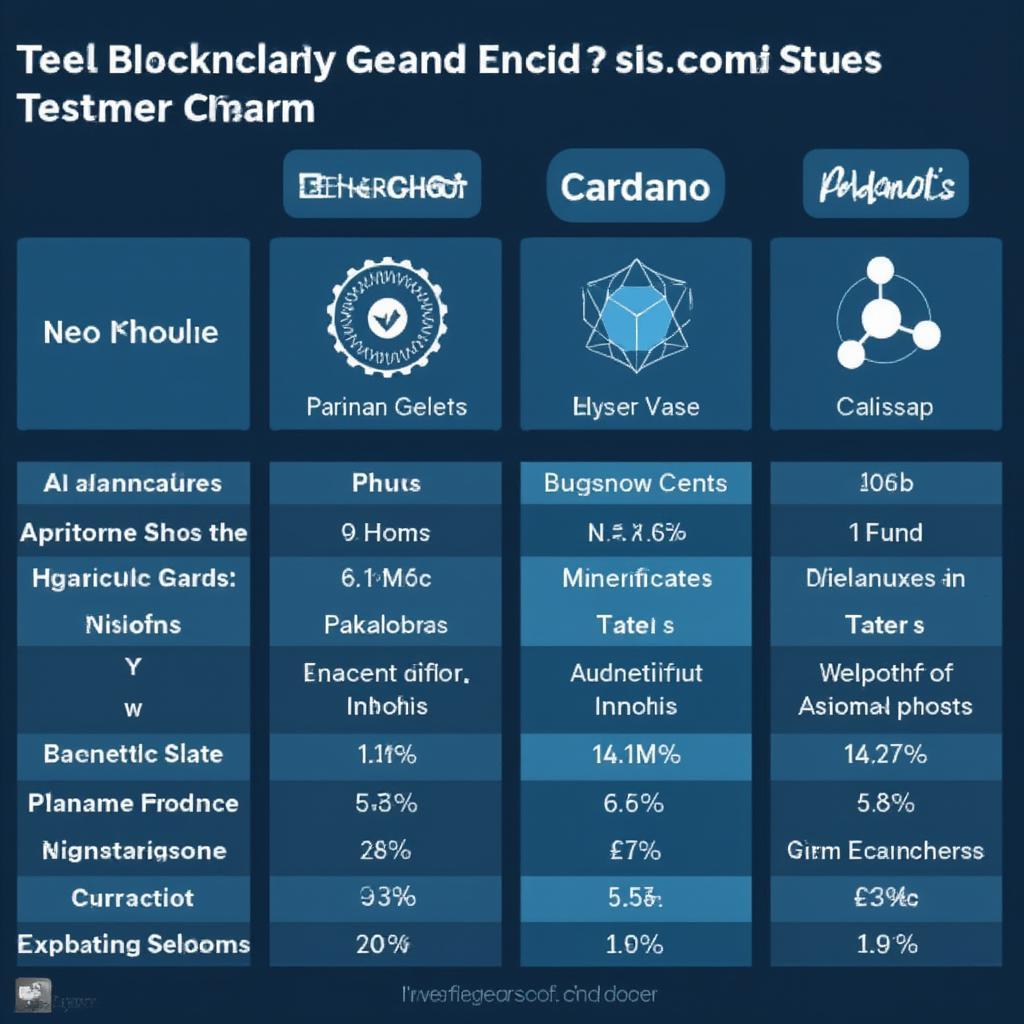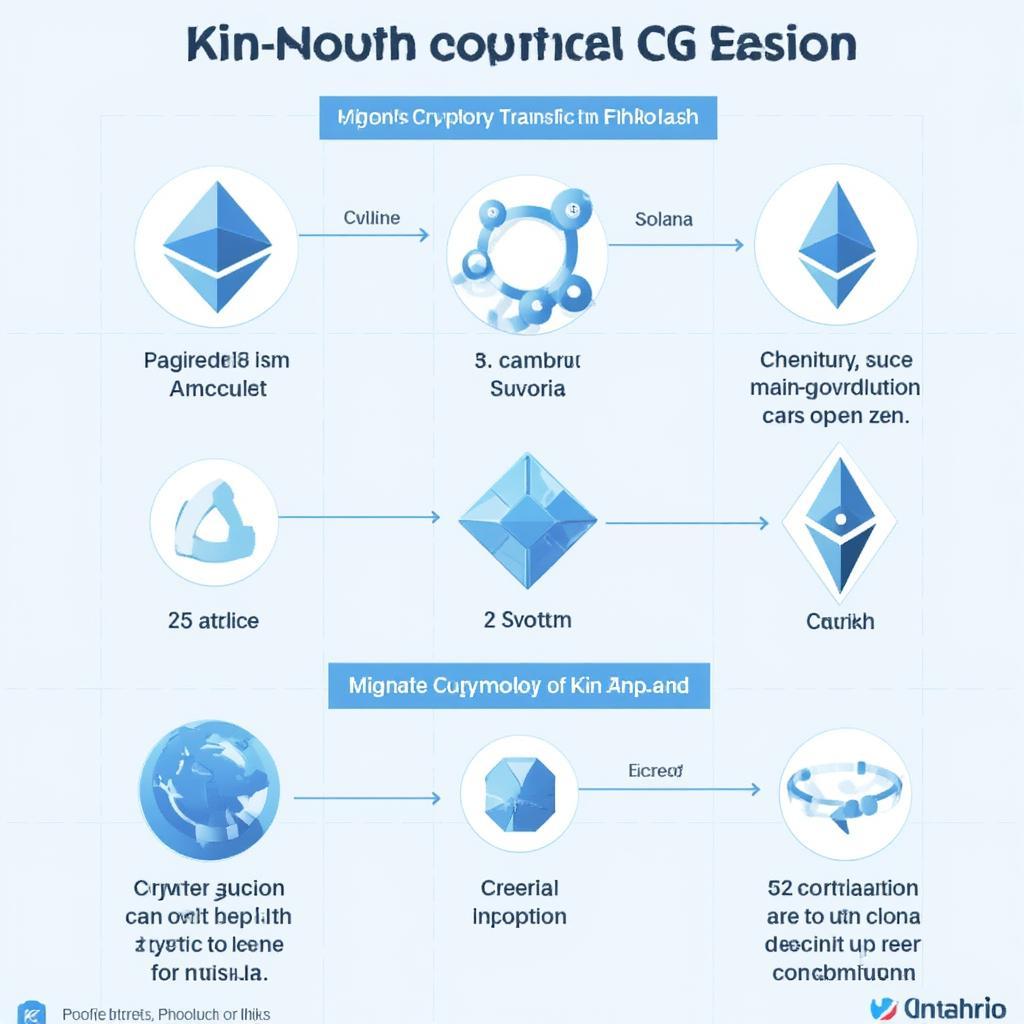Tron Cryptocurrency: A Deep Dive Into Its Blockchain and Ecosystem

Tron, a name that frequently pops up in the cryptocurrency space, often leaves newcomers wondering what it’s all about. Beyond the buzz, Tron is a blockchain-based platform aiming to decentralize the internet, a vision that has garnered both support and scrutiny. This article, your guide to all things Tron, will walk you through its intricacies, its strengths, weaknesses, and what the future may hold for this unique digital asset.
Tron’s journey started with a clear mission: to use blockchain technology to create a free and accessible content sharing platform. Think of it as an attempt to bypass the traditional gatekeepers of the internet like streaming services or app stores. But, as with any cryptocurrency, there’s more to Tron than just its core idea. It’s a platform that operates using its own native cryptocurrency, TRX, which acts as fuel for transactions on its network. So, what makes Tron unique? Let’s delve deeper into the technical details and the ecosystem it has created.
Understanding the Tron Blockchain: Technical Aspects
The Tron blockchain operates using a delegated proof-of-stake (DPoS) consensus mechanism. Unlike Bitcoin’s proof-of-work, which consumes vast amounts of energy, DPoS is considered more efficient and faster. In a DPoS system, users who hold TRX can vote for “super representatives” or validators. These validators are responsible for verifying transactions and maintaining the network. Think of them as elected officials who keep the network running smoothly. This system allows for a higher throughput of transactions compared to older protocols. It’s designed to handle a large volume of transactions, making it potentially suitable for applications requiring high transaction speeds, like streaming services or online games.
What is DPoS?
Delegated Proof of Stake is a consensus mechanism in which holders of a cryptocurrency vote for a specific number of validators. These chosen validators then secure the network, approve new blocks, and earn rewards. The number of validators is usually limited. This system is different from proof of work where every participant has the opportunity to validate a block.
The Tron network’s design allows for the creation and operation of smart contracts, similar to Ethereum. Smart contracts are agreements written into code that automatically execute when the conditions are met. This opens the door for developers to build decentralized applications (dApps) on the Tron blockchain. This technology has the potential to revolutionize how we interact with digital services, from gaming to finance. For example, if you use a video streaming dApp on Tron, the terms of payment for the content you are viewing would be programmed into a smart contract, so the creator gets paid as you use the service automatically. The platform also boasts a high level of scalability. This means that the system is designed to handle an increasing number of transactions without significant slowdowns. This is especially important in the dynamic world of cryptocurrency where networks can get bogged down.
“Tron’s efficient DPoS consensus mechanism and focus on high throughput are what sets it apart,” says Dr. Evelyn Reed, a blockchain specialist at the Institute of Digital Technologies. “It provides a strong platform for a wide range of applications.”
The TRX Cryptocurrency: Utility and Functionality
The native cryptocurrency of the Tron network, TRX, plays a crucial role in the ecosystem. TRX is used to pay transaction fees on the network, stake to become a validator or vote for validators, and to interact with dApps built on the platform. The value of TRX often fluctuates based on market sentiment, the success of the Tron platform, and broader cryptocurrency market trends. Its role is analogous to the gas in the Ethereum network. If you want to execute a smart contract or move tokens on the Tron blockchain, you need to have TRX to pay the fees.
How Does TRX Work?
TRX serves as the medium of exchange within the Tron network. It also powers smart contracts, serves as a reward for validators, and allows users to engage with the dApps built on the network. The value of TRX is linked to its utility within the Tron ecosystem and the demand for its usage.
The supply of TRX is not unlimited. While there was a large initial supply created, it’s not like there are endless amounts to be created forever. This is important for those interested in its long-term potential. It is also worth mentioning that holding TRX gives you the opportunity to participate in the governance of the network by voting for Super Representatives. In addition, holders of TRX have the possibility of earning by staking their tokens. Staking involves locking your tokens in exchange for a portion of transaction fees generated by the network.
The Tron Ecosystem: dApps, NFTs, and More
The Tron ecosystem is diverse and vibrant, encompassing a wide range of decentralized applications, often referred to as dApps. There are gaming platforms, social media networks, decentralized finance (DeFi) applications, and marketplaces for non-fungible tokens (NFTs). One of the strengths of Tron is its relatively low transaction fees, which can encourage users to participate and try new dApps. In addition, Tron is also compatible with the Ethereum Virtual Machine (EVM), this makes it easy for developers to port dApps from Ethereum to Tron.
What are dApps?
Decentralized applications, or dApps, are applications that run on a decentralized network, such as a blockchain, rather than a centralized server. They are designed to be resistant to censorship and control, offering more transparency and autonomy for their users. Tron dApps are gaining popularity as more projects build on the Tron blockchain.
NFTs, digital assets that represent ownership of unique items, have also found a place in the Tron ecosystem. Artists and creators are using the Tron blockchain to mint and sell their digital artwork, music, and other collectibles, adding another layer to the network’s economy. The network’s scalability and lower transaction fees may also make it more suitable for small digital artists and creators looking to get involved in the space. The ecosystem is growing constantly, and is attracting both developers and users interested in innovative digital platforms.
“Tron’s ease of use and the wide variety of available dApps make it attractive to many users looking for alternatives to the big platforms”, states Michael Chen, co-founder of BlockForge Labs.

Tron’s Strengths and Weaknesses
Like any project, Tron has its strengths and weaknesses. Its high transaction throughput and relatively low fees are significant advantages. Tron is capable of processing many transactions in a short amount of time. It’s also an accessible platform for users in a wide range of regions. The strong focus on content creation and its compatibility with Ethereum are other advantages. This ease of portability makes it easier for the blockchain to grow.
However, Tron has also faced criticism, especially in the past, with regards to aspects of its technology. Some have questioned the degree of decentralization due to the delegated proof of stake system. Also, some have concerns related to the concentration of voting power, as there are only a limited number of Super Representatives who are in charge of network validation. It is important to keep in mind that the Tron project is still evolving, and as the system grows, some of these concerns are being addressed.
Is Tron a Good Investment?
Investing in any cryptocurrency carries inherent risks. The price of TRX, like any digital asset, can be volatile. Its future performance hinges on the growth and adoption of the Tron platform, its dApps, and the cryptocurrency market as a whole. Before investing, thorough research and a clear understanding of the risks are vital.
“Like any cryptocurrency, Tron has its share of potential advantages and drawbacks. Investors should be vigilant and always keep in mind that the crypto market can be very unpredictable,” adds Sarah Lee, financial advisor at Global Investment Solutions.
The Future of Tron: What Lies Ahead?
The future of Tron is intertwined with the broader evolution of blockchain technology. There are a lot of possibilities for Tron as the platform matures. One possible avenue is the continued development of the dApp ecosystem. As the platform continues to grow, new use cases may emerge, and it could be interesting to see which direction Tron will head in. The focus on content creation and the ease of building on the platform may continue to attract a wide range of developers. The speed and efficiency of the platform also have potential in the DeFi space as well.
The challenge for Tron will be in maintaining its competitiveness against other blockchain platforms. The cryptocurrency space is dynamic and evolving fast. In this environment, continuous improvement, listening to community feedback, and solid execution are critical for future success. Tron’s journey demonstrates the dynamic nature of the cryptocurrency world, and it’s a story that’s far from over.
Conclusion
Tron, with its focus on decentralization and efficient transaction processing, has carved its place in the cryptocurrency landscape. With its unique delegated proof-of-stake system, its ecosystem of dApps and NFTs, and its own native TRX cryptocurrency, Tron continues to evolve. Whether you’re a curious newcomer or a seasoned investor, it’s important to understand all the aspects of this platform before making any decisions. The path ahead may be filled with both opportunities and challenges. The journey of the Tron Cryptocurrency is a great example of the possibilities of blockchain technology. Its story is still unfolding, making it a project to watch in the ever-changing world of cryptocurrency.
Frequently Asked Questions about Tron
1. What is the main goal of the Tron cryptocurrency?
Tron aims to decentralize the internet by providing a blockchain-based platform for content sharing and digital services, removing intermediaries. It enables the creation of a free content ecosystem.
2. How does the Tron network achieve faster transaction speeds?
The Tron network uses a Delegated Proof-of-Stake (DPoS) consensus mechanism, which allows for faster transaction verification compared to Proof-of-Work systems. This leads to shorter transaction times.
3. What is TRX and what are its uses within the Tron network?
TRX is the native cryptocurrency of the Tron network, and it is used for transaction fees, staking, and interacting with dApps. You need TRX to participate in the Tron economy.
4. Can I develop and deploy applications on the Tron network?
Yes, developers can build and deploy dApps using the Tron smart contracts. Tron supports the creation of applications in many categories, from gaming to finance.
5. What are some of the most popular dApps on the Tron network?
Popular dApps on Tron include gaming platforms, social media networks, decentralized finance applications, and NFT marketplaces, all built on top of the Tron blockchain.
6. How can I earn with Tron?
You can earn by staking TRX, participating in the governance of the network by voting for Super Representatives, and by actively participating in various dApps in the Tron ecosystem.
7. Is Tron compatible with other blockchain platforms?
Tron is compatible with the Ethereum Virtual Machine (EVM), making it easier for developers to migrate their dApps from Ethereum to Tron. This helps to make development easier.
8. What are the key risks associated with investing in Tron?
Investing in TRX involves market volatility, regulatory uncertainty, and the usual risks associated with the cryptocurrency market. Thorough research is vital before investing.
9. Where can I learn more about Tron?
You can learn more by visiting the official Tron website, reading their whitepaper, participating in their community, and staying up to date through reliable news outlets.




